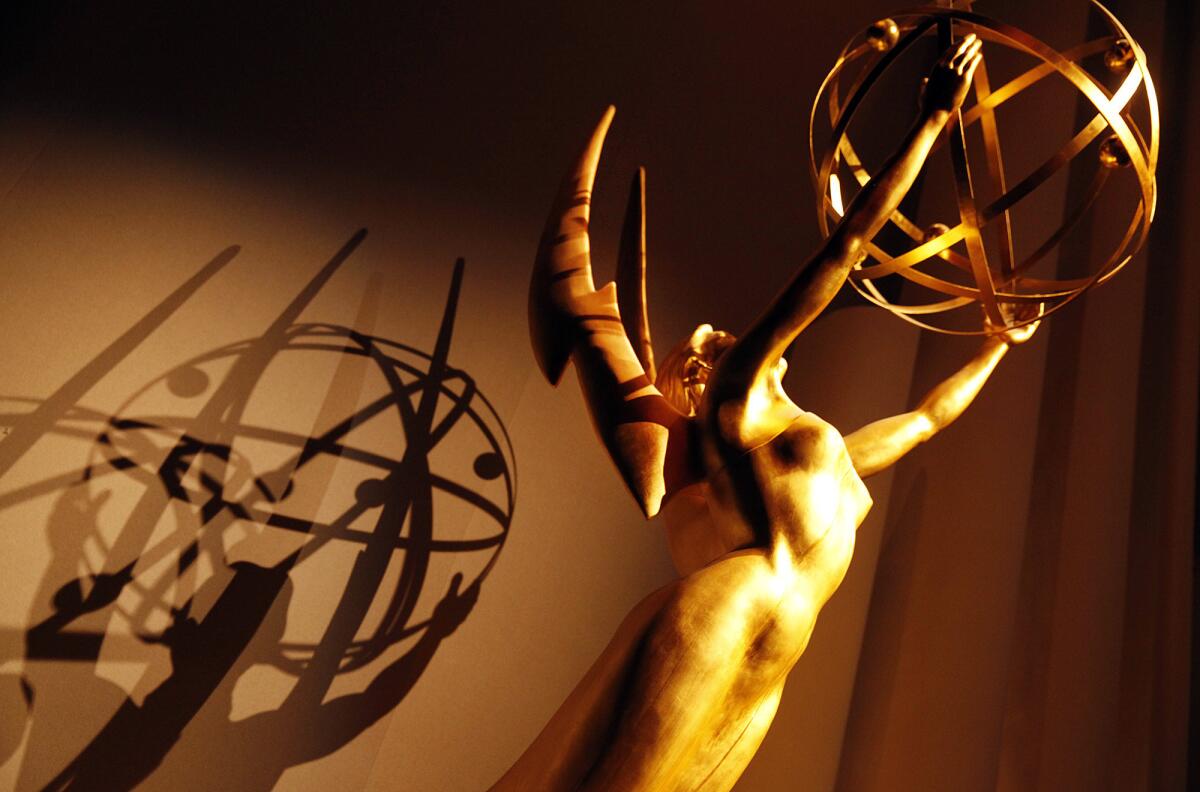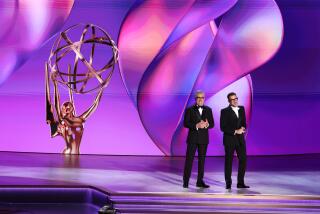Opinion: TV is a vast wasteland for women, and the Emmys prove it

- Share via
Something interesting happened on the way to the modern Emmy Awards. Two aisles were created in the acting category: one for men and one for women.
The awards didn’t start out that way. At the first Emmy ceremony in 1949, there were only three categories — best film, most popular tv program, and most outstanding television personality. The nominees for the latter were three women, two men and a dummy. (Shirley Dinsdale won, along with her puppet, Judy Splinters.)
It was two years later, in 1951, that the acting categories were added, in genderized form. Interestingly, Betty White was nominated for an Emmy then, as she is again this year — 63 years later. She can count seven Emmys in her collection now, and surely hopes to add an eighth for outstanding host for a reality or reality-competition program. The category isn’t bifurcated by gender, and it has never been won by a solo female.
Emmy nominations 2014: List of nominees
The fact is that in the Emmy Award categories that aren’t bifurcated by gender, male nominees tend to outnumber female ones, often by huge margins. There are only four kinds of categories in which women outnumber men, including reality hosts. (Perhaps that should be hosts and hostesses? ) As for the other kinds of categories in which women outnumber men, they are … well, we’ll get to that.
The Women In Film foundation was organized more than 40 years ago with the idea that “entertainment created by and for women should represent 50% of all content worldwide, in sync with the voice of the population itself.” A quick look at its list of financial supporters — ABC, HBO and Universal among them — might give you the idea that with so much of Hollywood interested in gender parity, WIF’s goal ought to be in sight.
But the truth is in the Emmy nominee list.
Of the 34 nominations for directing awards, only four went to women: Gail Mancuso (“Modern Family”) and Jodie Foster (“Orange Is the New Black”) for comedy series, Beth McCarthy Miller (“The Sound of Music Live”) for variety special, and Jehane Noujaim (“The Square”) for documentary.
The writer nominee list is similarly skewed. No more than one show “written by” a woman or women is nominated in any category other than variety series. In that category, of the 71 nominees — so many that it would be utterly embarrassing for any show to exclude women entirely — only 12 are women, with only a single female “head writer.”
According to a recent study by Martha M. Lauzen of San Diego State University, women remain underrepresented not just in the award ranks, but in the television business as a whole. In 2013, women accounted for only 28% of the creators, executive producers, producers, directors, writers, editors and directors of photography working on prime-time programs airing on the broadcast networks.
Timeline: Emmy winners through the years
It may be that women apply in equal numbers but don’t get jobs from those in charge, who are largely male. It may be that fewer women aspire to be directors and television writers, but if so the discrepancy may circle back to the ways the media and society shape and imagine the role of women.
The fact is that gender stereotypes on TV and in film remain ubiquitous and often unrecognized. The Lauzen study found that while 43% of speaking characters on television last year were female — a historical high — women characters were both younger and less likely to be seen at work than men. A study of G-rated movies by the Geena Davis Institute on Gender in Media found three male characters for every one female, with most of the female characters stereotyped and/or hyper-sexualized. Female aspirations were almost exclusively romance, while male goals almost never were. The top occupation for females? Royalty.
Is it any wonder that the more hours of television a boy watches, the more sexist he becomes, while the more a girl watches, the fewer options she believes she has in life?
On-screen princesses have not, on the whole, been dreaming of careers. They may be heroic or good-hearted, but they must be beautiful. So perhaps it’s no surprise that the other Emmy Awards in which women nominees outnumber men can help with that. They are all in the categories for costume, makeup and hair.
Meg Waite Clayton is the author of five novels, including “The Wednesday Sisters,” “The Wednesday Daughters” and the forthcoming “The Race for Paris.” www.megwaiteclayton.com
Follow the Opinion section on Twitter @latimesopinion
More to Read
A cure for the common opinion
Get thought-provoking perspectives with our weekly newsletter.
You may occasionally receive promotional content from the Los Angeles Times.









